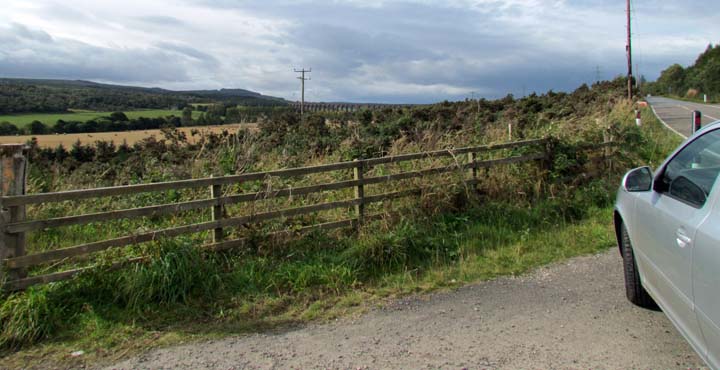
Culloden Battlefield
The Battle
of Culloden was the final confrontation of the 1745 Jacobite Rising. Taking
place on 16 April 1746, the battle pitted the Jacobite forces of Charles Edward
Stuart against an
army commanded by William Augustus, Duke of Cumberland, loyal to
the British government. The Jacobite cause of overthrowing the reigning House of
Hanover and restoring the house of Stuart to the British throne was dealt a decisive defeat at
Culloden; Charles
Stuart never mounted any further attempts to challenge Hanoverian power in
Britain. The
conflict was the last pitched battle fought on British soil.
Charles Stuart's Jacobite
army consisted largely of Scottish Highlanders, as well as a number of Lowland
Scots and a small detachment
of Englishmen from the Manchester Regiment. The
Jacobites were supported and supplied by the Kingdom of France and French
and Irish units loyal to France were part of the Jacobite army.
The government force was
mostly English, along with a significant number of Scottish Lowlanders and
Highlanders, a battalion of Ulster men from Ireland, and a small number of
Hessians from Germany and Austrians. Meeting on
Culloden Moor, the battle was both quick and bloody, taking place within an
hour. Following an unsuccessful Highland Charge against the government lines, the Jacobites were routed and driven from the
field.
Between 1,500 and 2,000
Jacobites were killed or wounded in the brief battle, while government losses
were lighter with 50 dead and 259 wounded. The aftermath of the battle and
subsequent crackdown on Jacobinism was brutal, earning Cumberland the sobriquet
"Butcher". Efforts were subsequently taken to further integrate the
comparatively wild Highlands into the Kingdom of Great Britain; civil
penalties were introduced to weaken Gaelic Culture and attack the Scottish
Clan system.
Bayonet drill innovations said to have been developed to counter the "Highland
Charge". Each soldier would thrust at the enemy on his right—rather than
the one straight ahead—in order to bypass the targe of
Highlanders.
Following his flight from
the battle, Charles Edward Stuart made his way towards the Hebrides with some
supporters. Finally on
19 September Stuart reached Borrodale on Loch nan Uamh in Arisaig where his
party boarded two small French ships which ferried them to France. He never
returned to Scotland.
Prisoners were taken south to England to stand trial
for high treason. Many were held on hulks on the Thames or in Tilbury, and
executions took place in Carlise, York and Kennington. Common. It was for
Cumberland's insistence that these aristocrats should not be pardoned, rather
than for his actions in Scotland, that he was nicknamed
"Butcher" by some.
Following up on the military success won by their forces, the British Government enacted laws to incorporate Scotland—specifically the Scottish Highlands—within the rest of Britain. Members of the Episcopalian clergy were required to gives oaths of allegiance to the reigning Hanoverian dynasty. The Abolition of Heritable Jurisdictions Act of 1747 ended the hereditary right of landowners to govern justice upon their estates through barony courts.
Anti-clothing measures were taking against the highland dress by an Act of Parliament in 1746. The result was that the wearing of tartan was banned from everyone in Scotland except as a uniform for officers and soldiers in the British Army and later landed men and their sons.
On the way, we again passed beautiful country

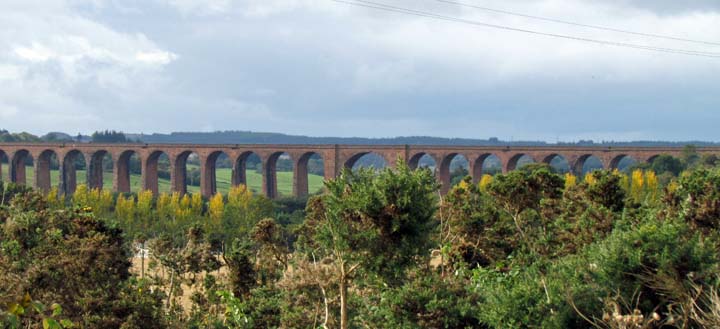
As we arrived at Culloden, we saw our first Highland cows
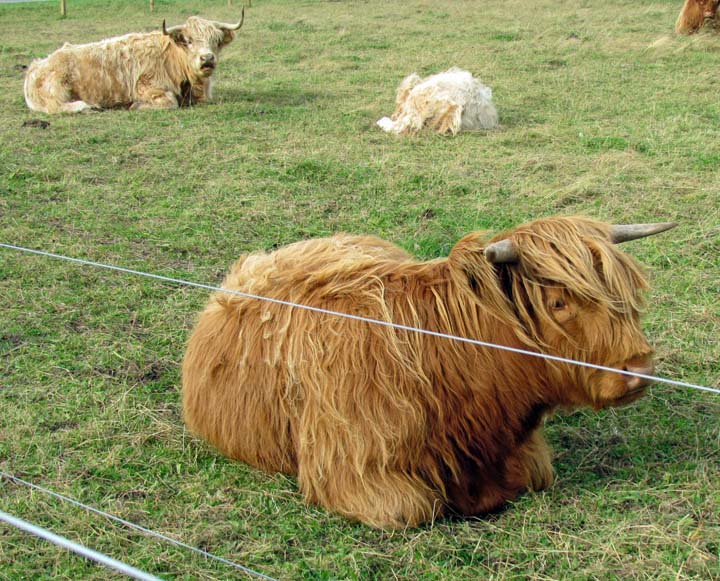
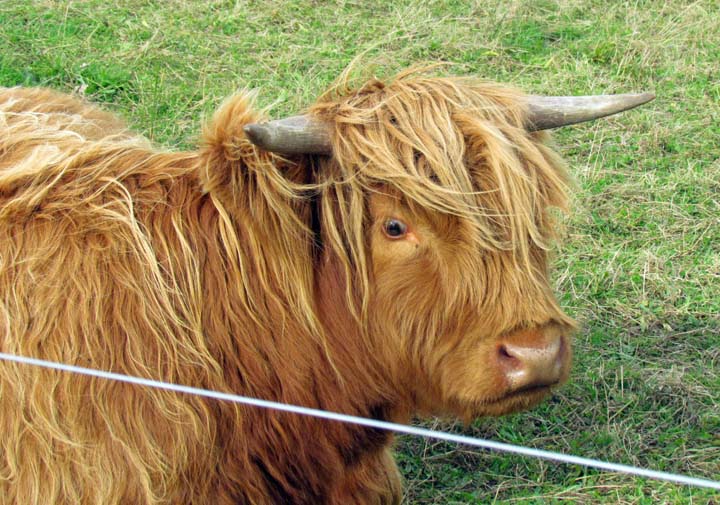
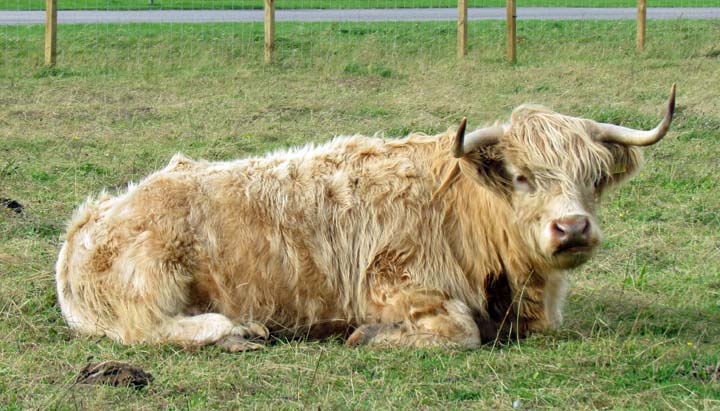
Sorry - they were so cute and unusual, we took way too many pictures
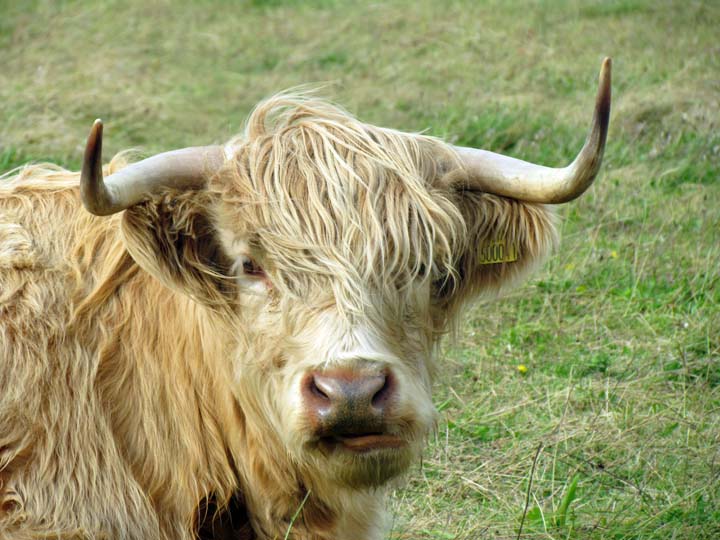
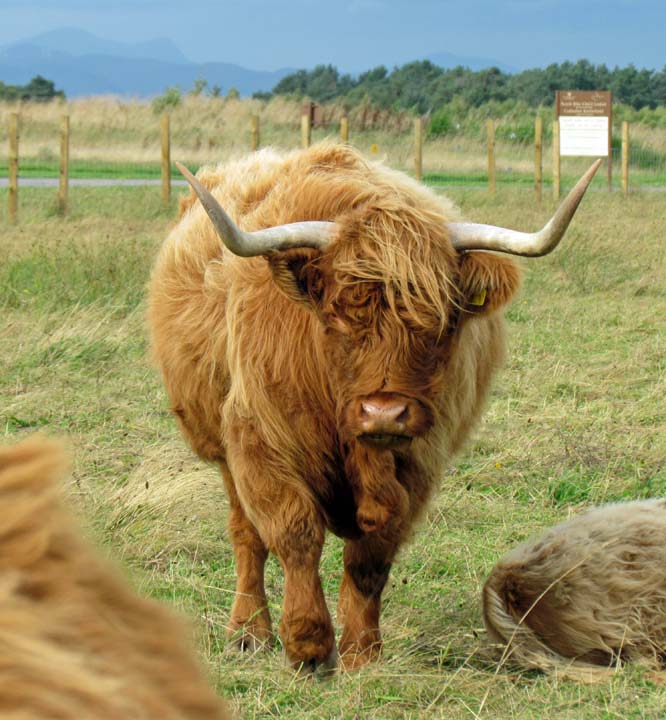
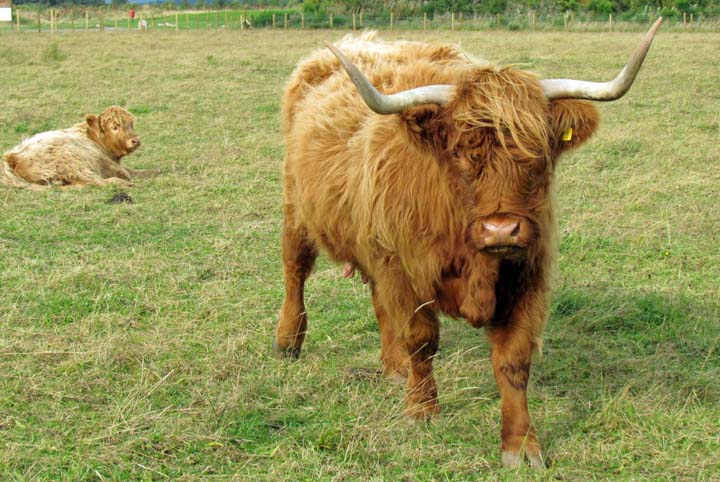
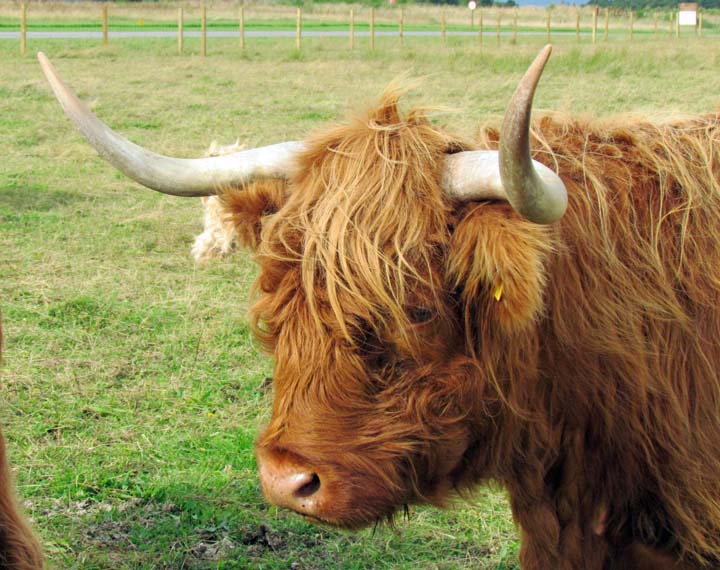
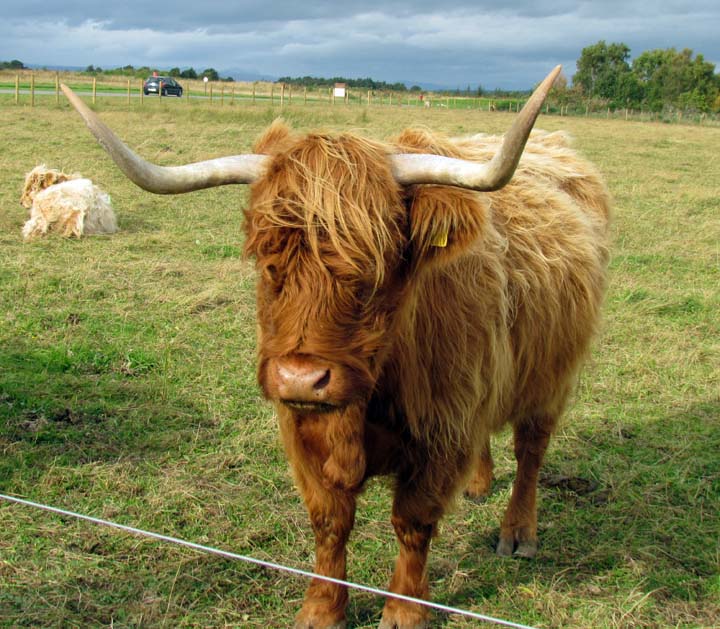
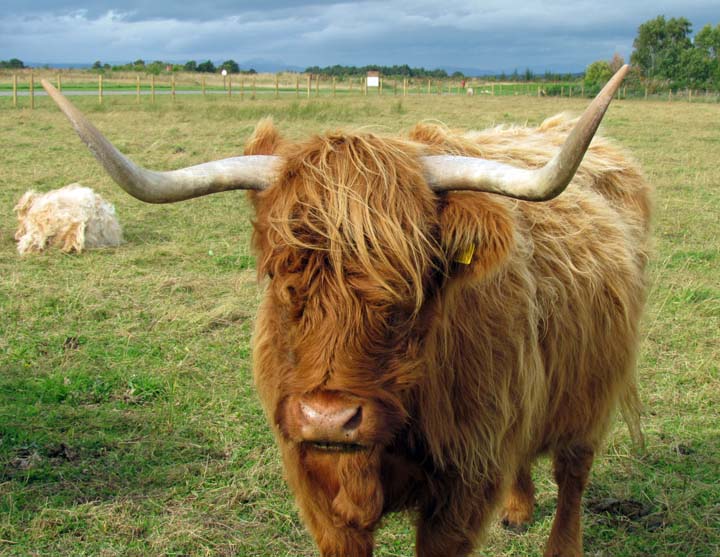
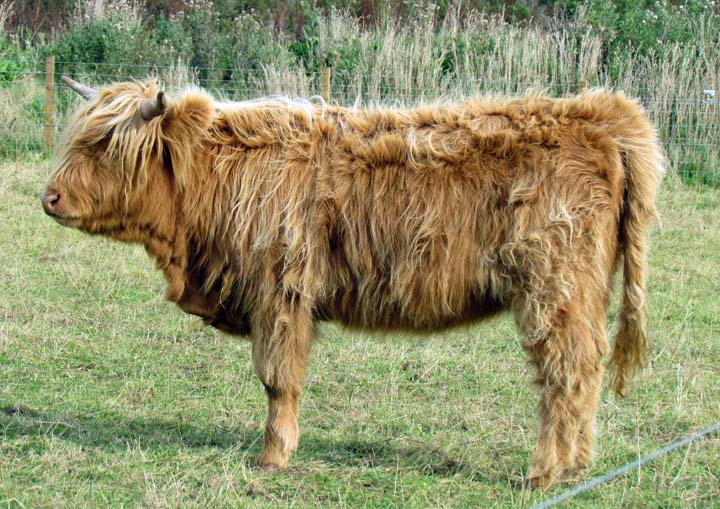
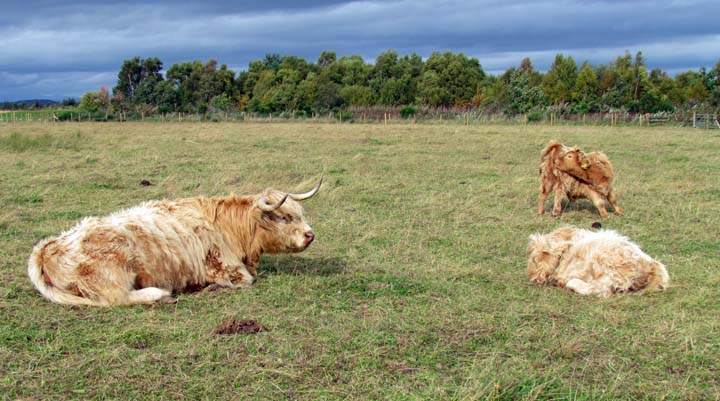
Looks like a pile of fur
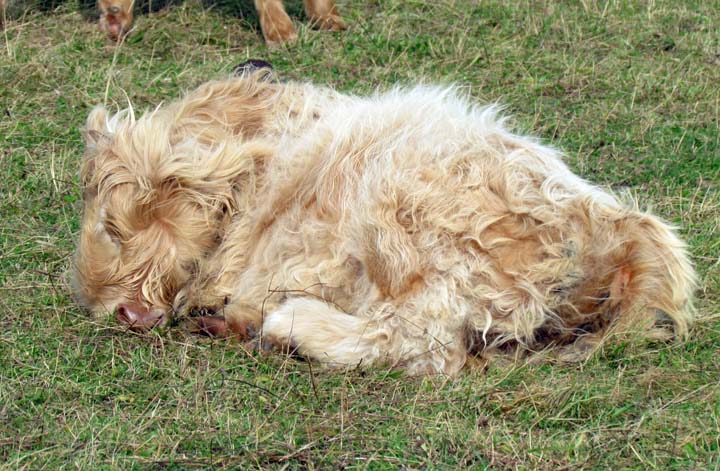
Then to the Battlefield
As you read in the beginning of this page, this was a very short, vicious, bloody battle
What happened here is engrained into Scot culture as well as history

The red and blue lines representing the opposing forces are thematic and seen throughout the visitor center and battlefield
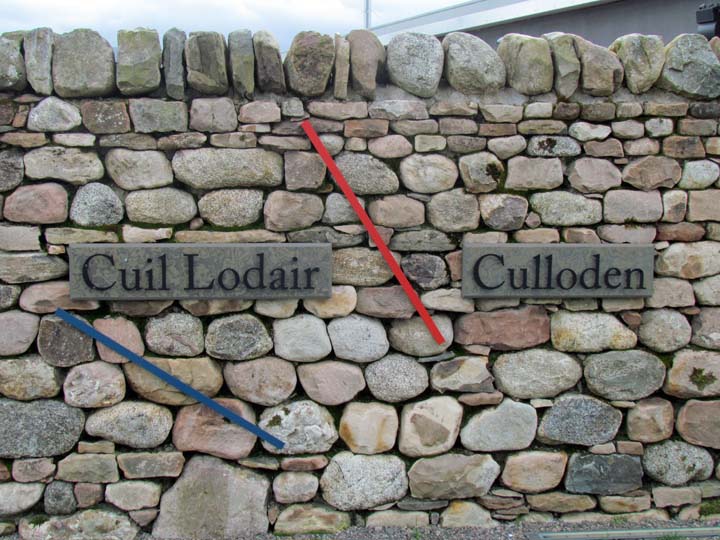
The visitor center is a must see
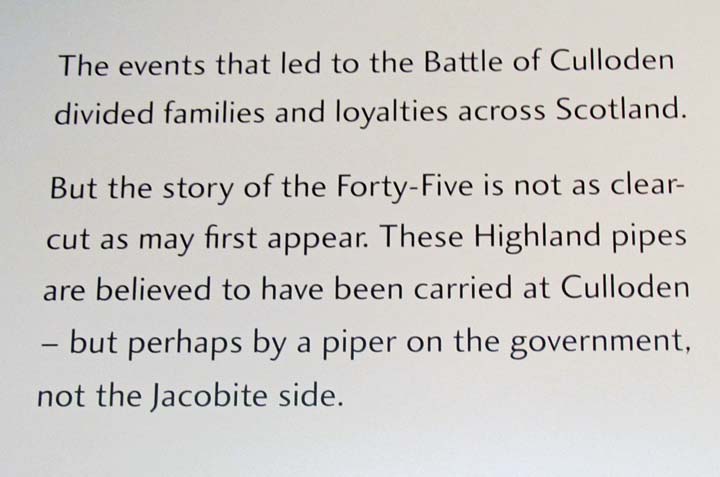
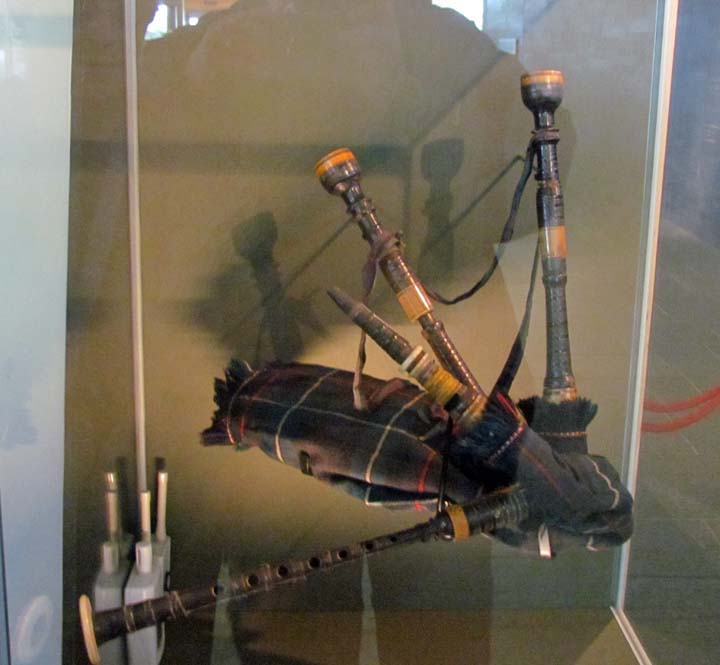
Rifles carried by government troops
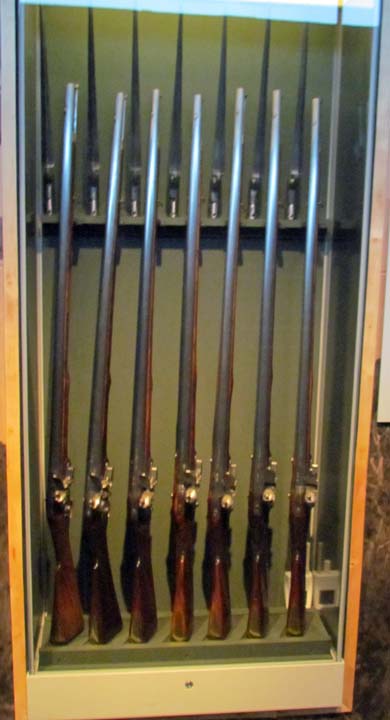 VS
VS
Blades carried by their opposition
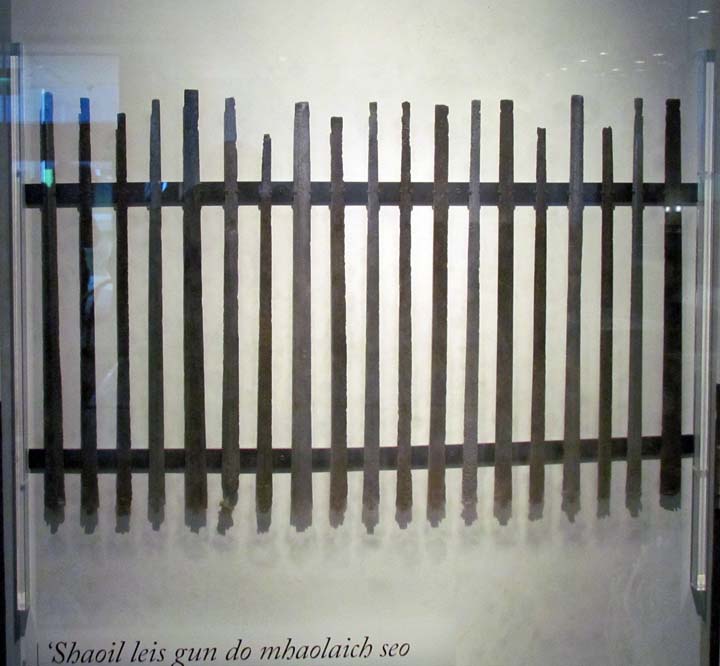
This battle is much remembered in verse, song and historical writing
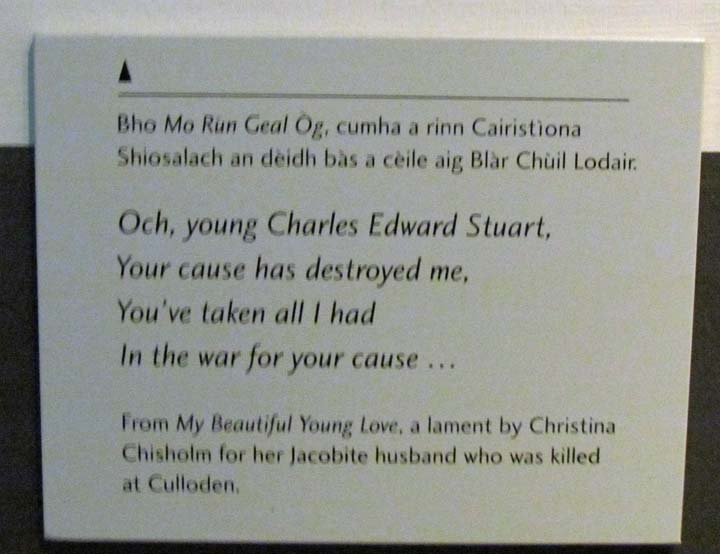
The battle field is a large undulating area, almost unmarked by prominent displays - other than red and blue flags. The flags are very effective in not only showing troop arrangements, but also creating the forlorn atmosphere of the vast, quiet battlefield - you can almost hear the cries of those fighting.
Its like a huge cemetery without tombstones
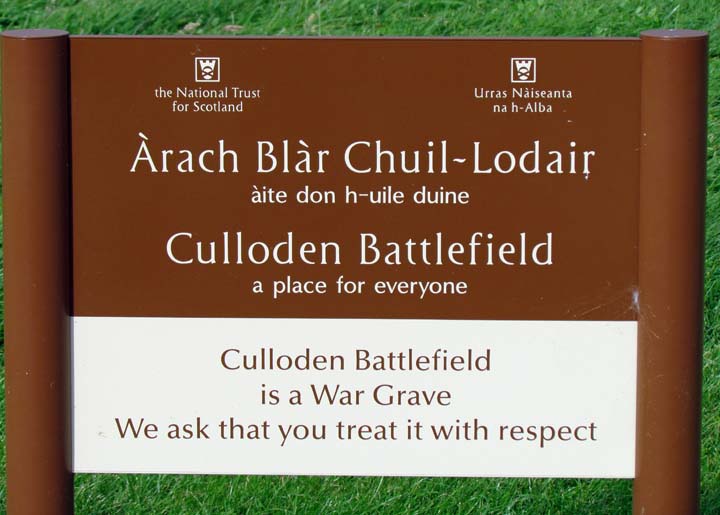

Our guide stand before the battlefield
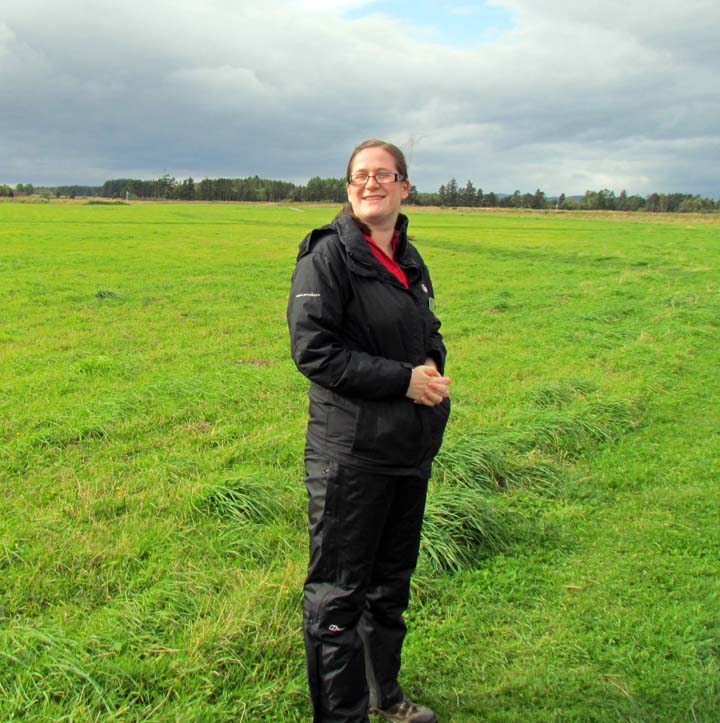
Yes, its windy and cool
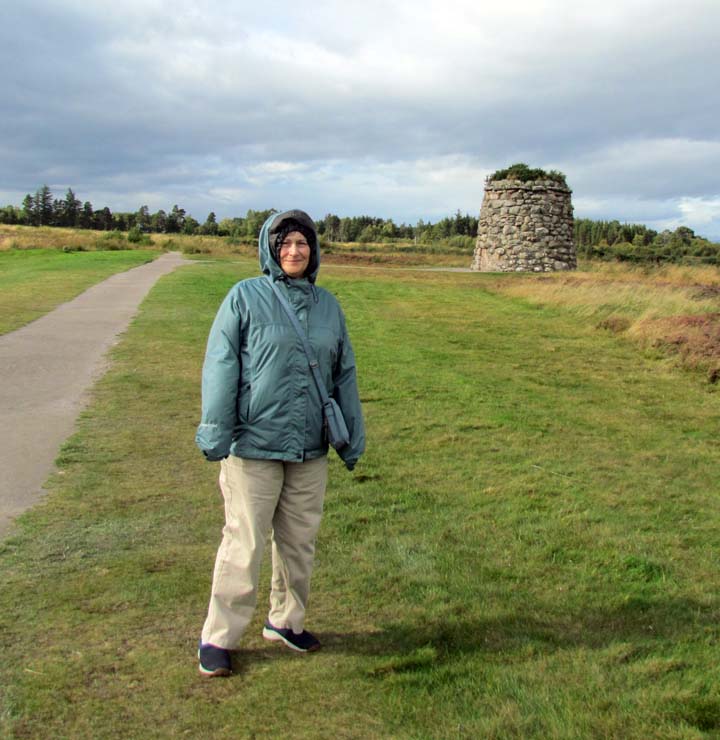
Heather shares patches with the long grass
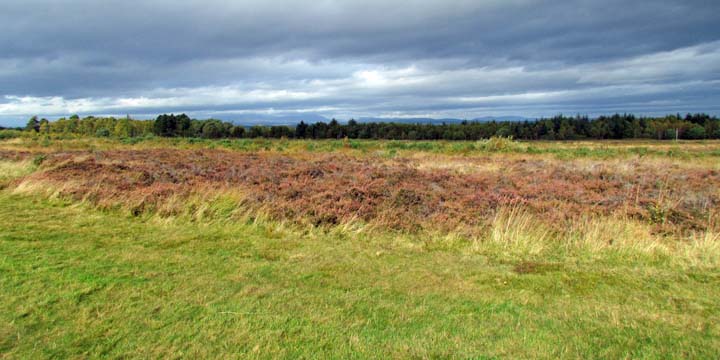
The sole monument on the battlefield
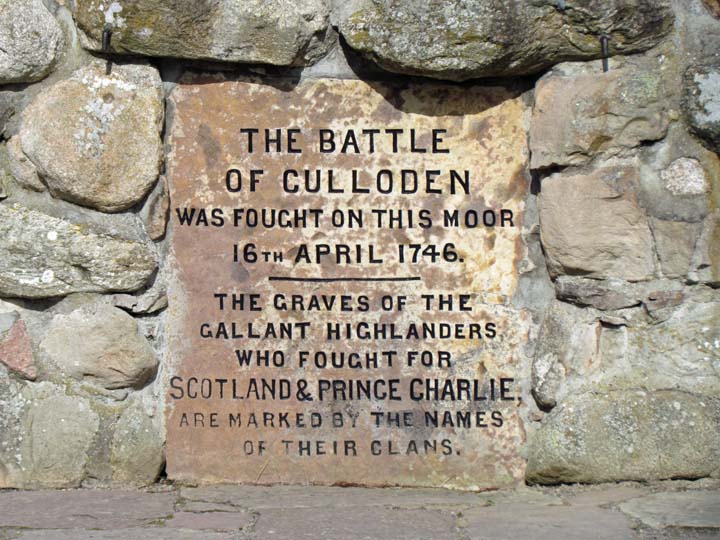
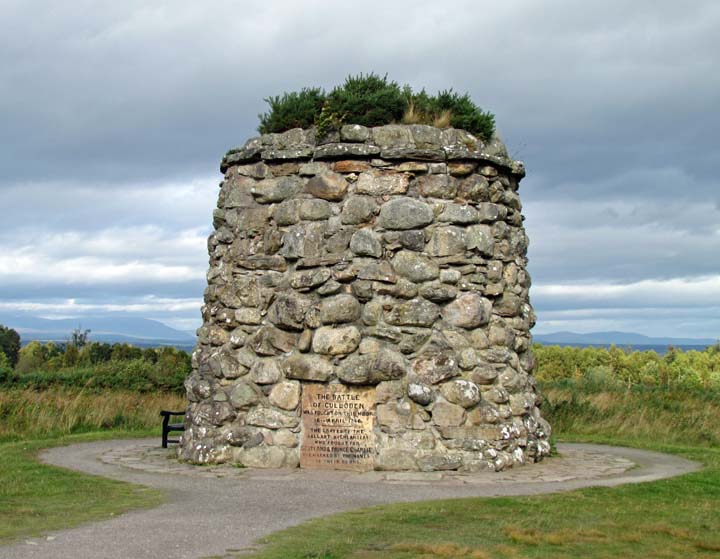
The clan's members were buried in mass graves
The graves are now but small, narrow mounds covered with grass
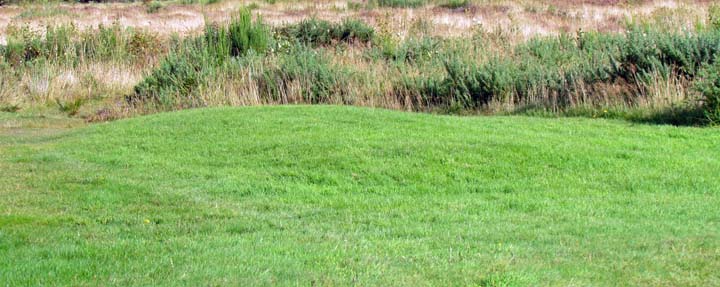
At one end of most, there is a small clan gravestone
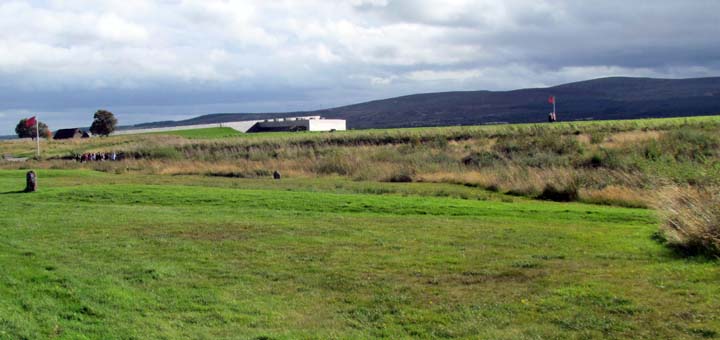
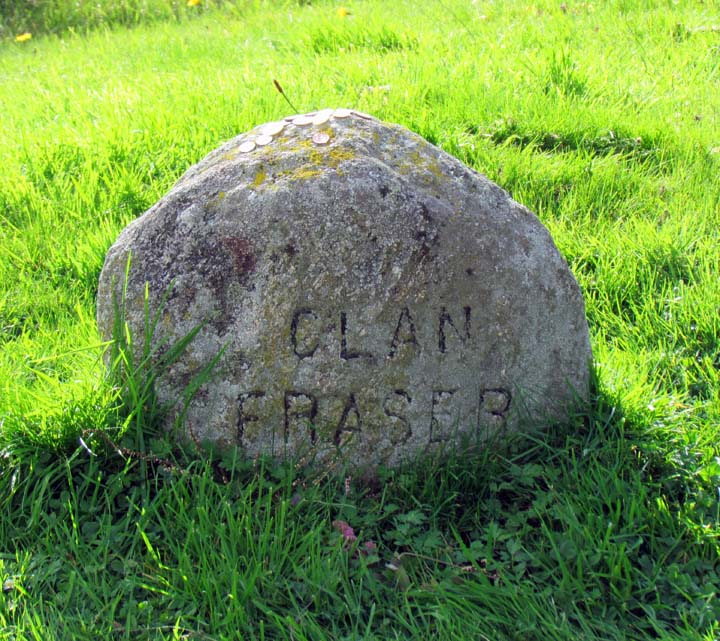
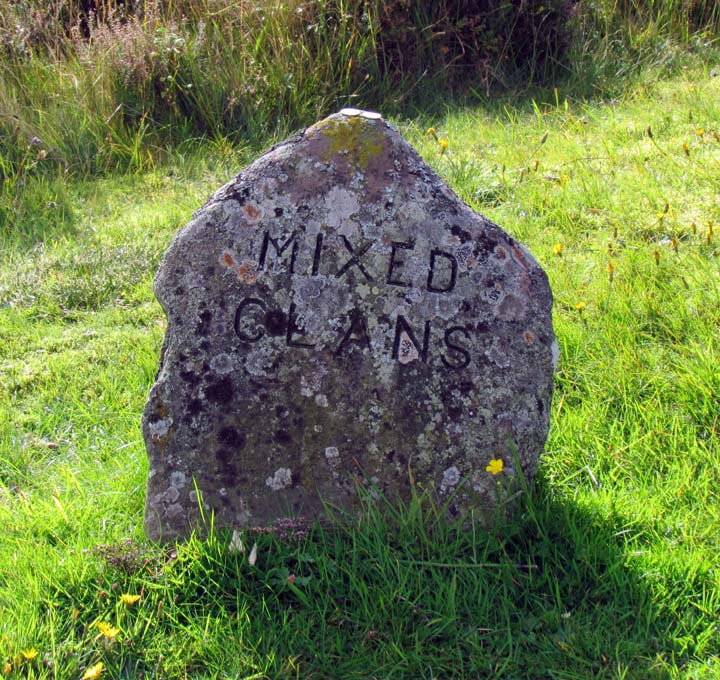
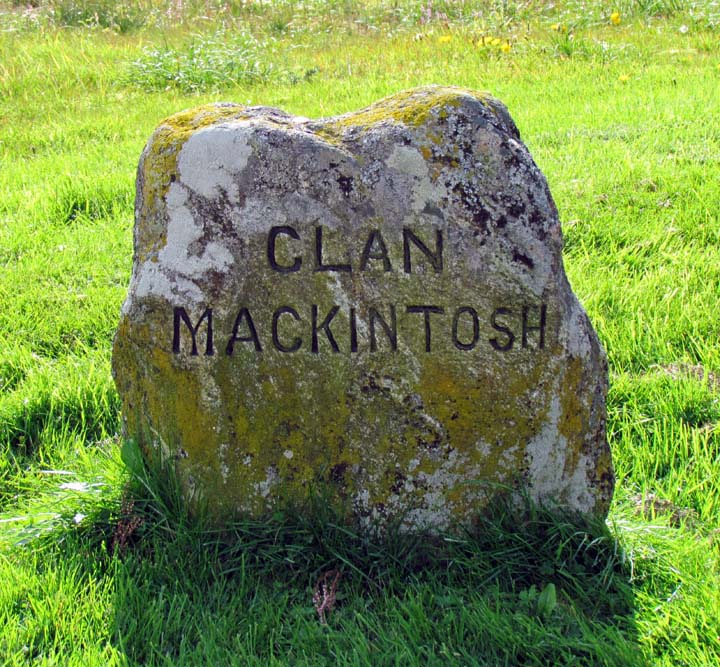
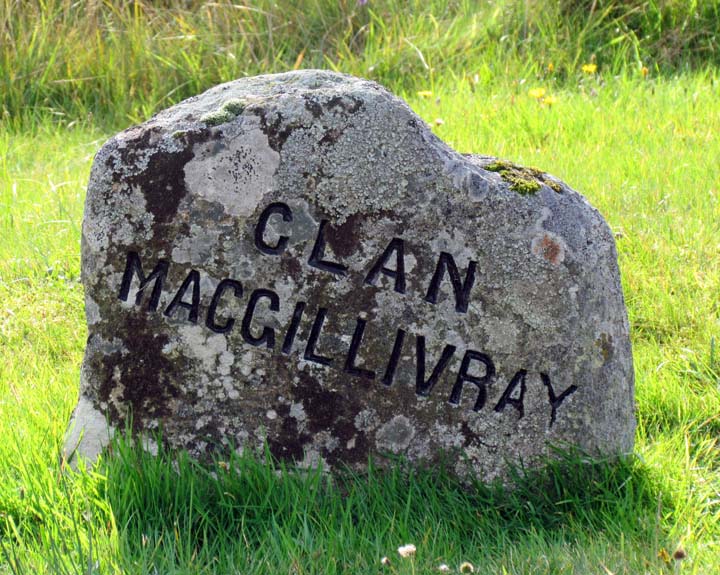
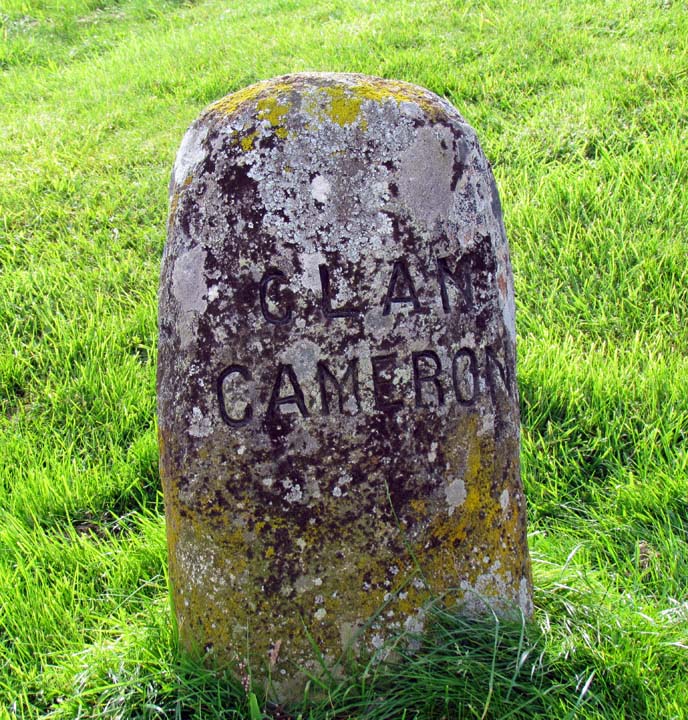
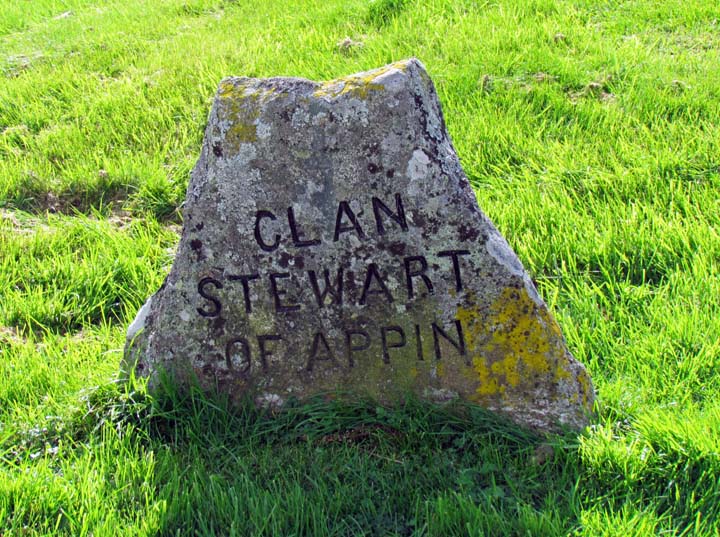
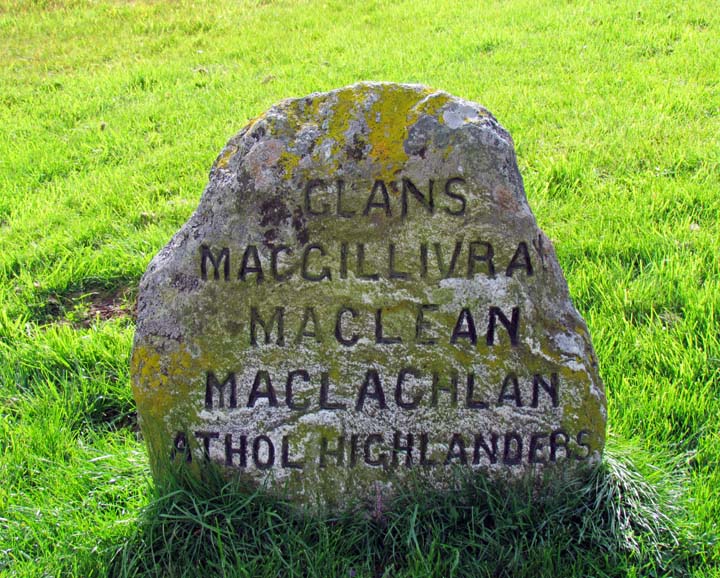
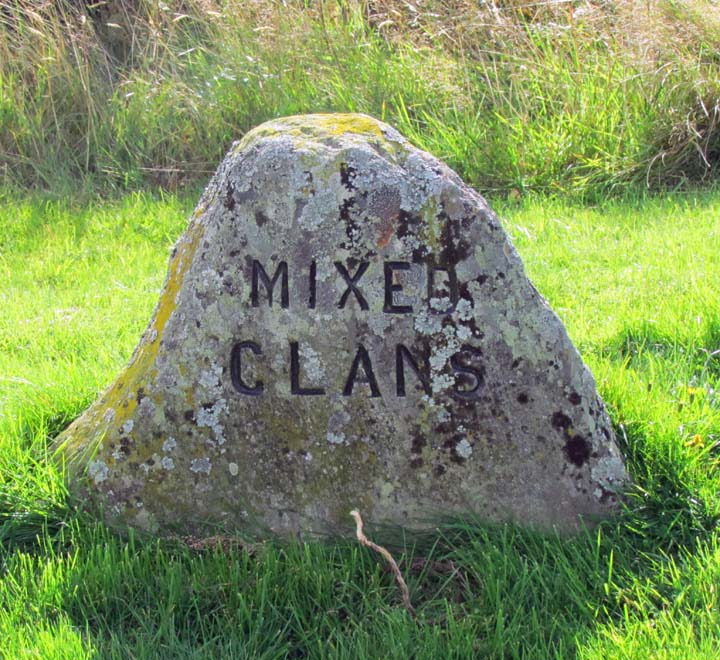
Mass graves line the path to the monument
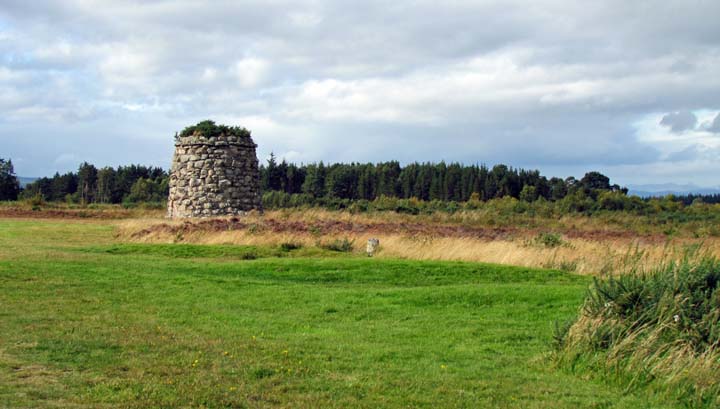
The field have been allowed to grow - to be the same as the day of the battle
as nearly as possible
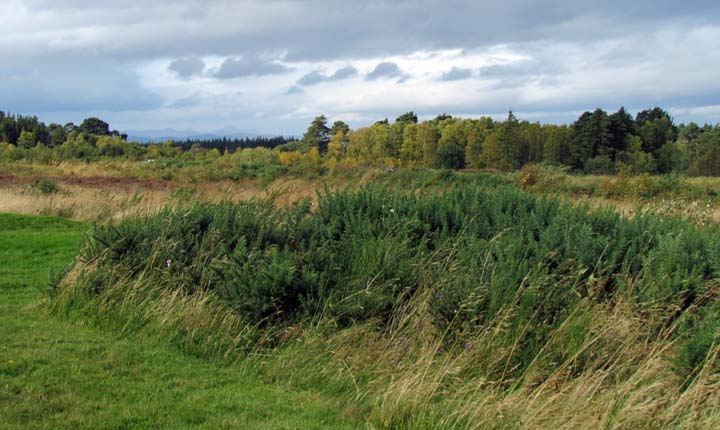
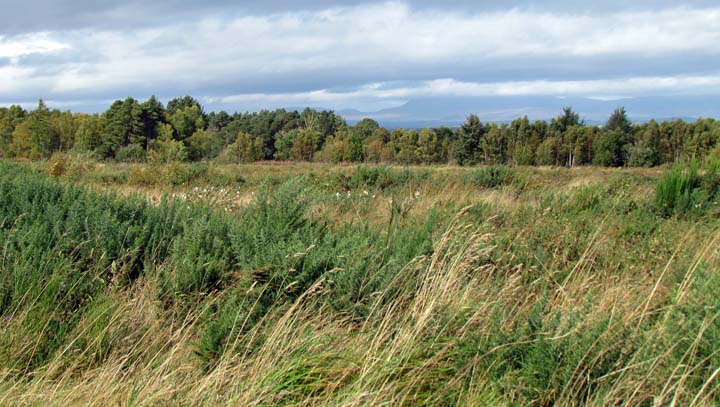
Red and blue flags mark the lines of troops prior to contact
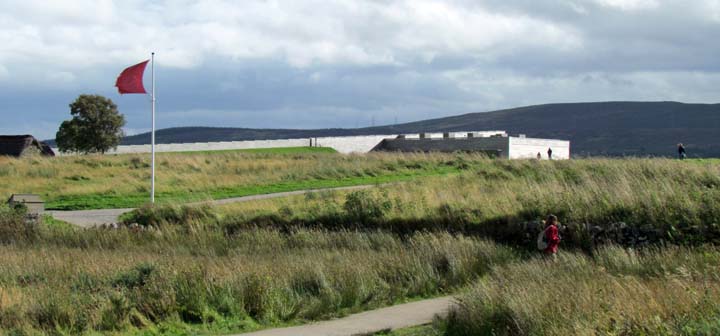
The boggy area where the clans charged - knee deep in mud
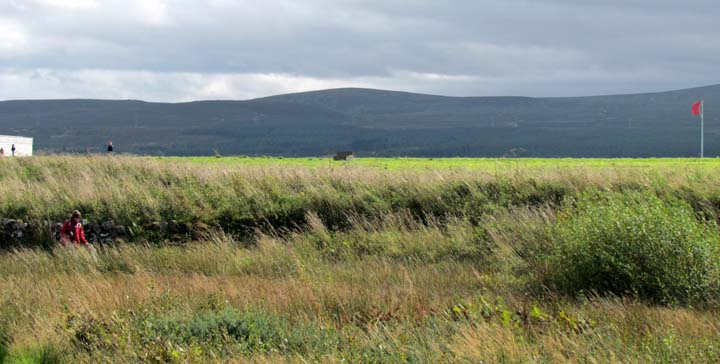

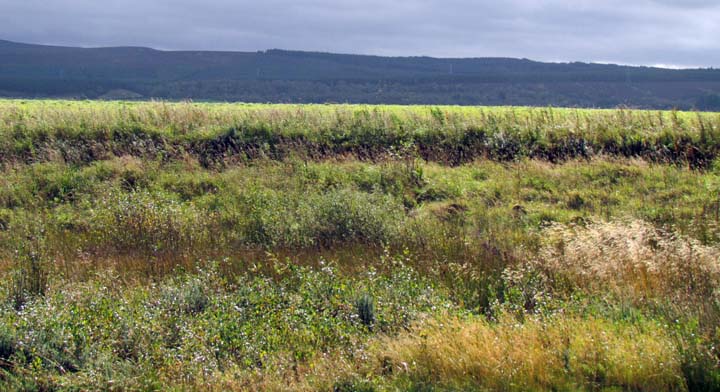
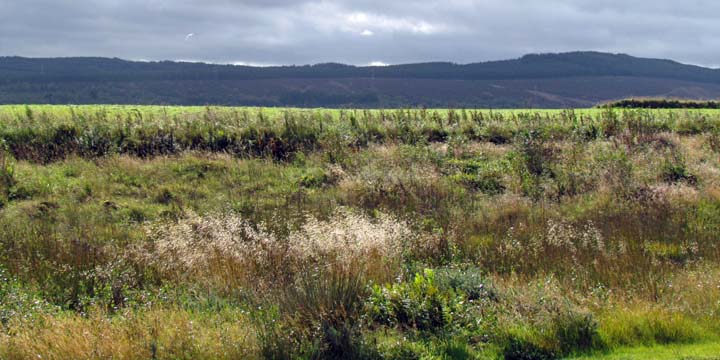
Mud - blades - charging rifles and cannon

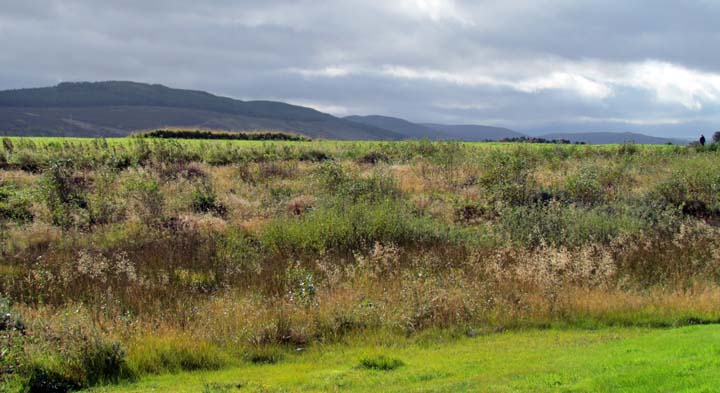
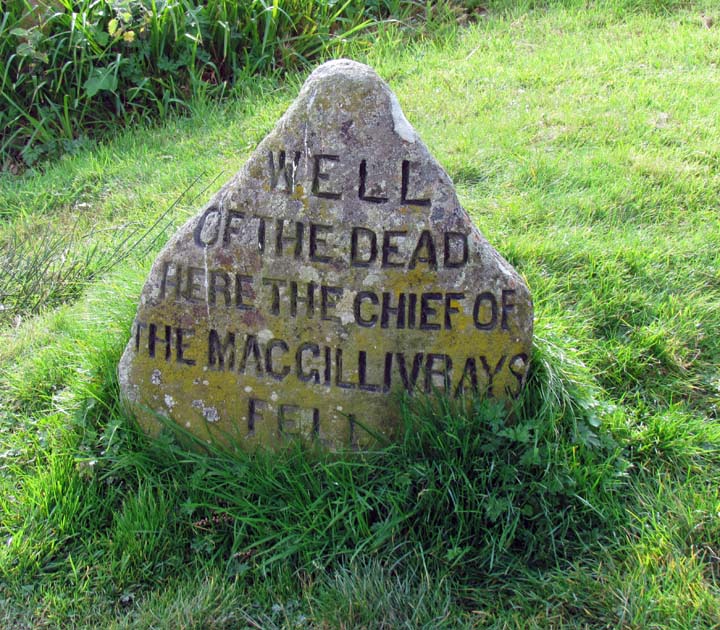
The path follows the line that was charged
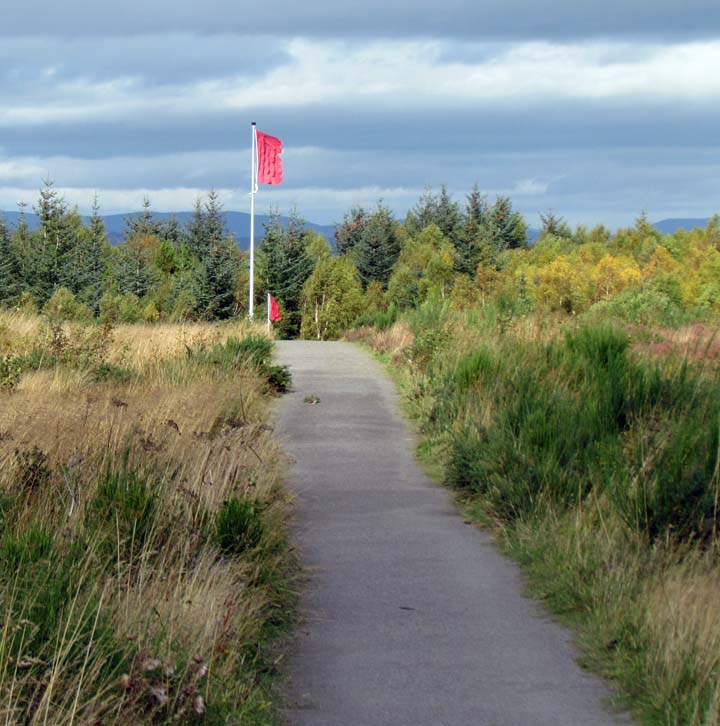
A beautiful stone building with the lone two trees on the battlefield
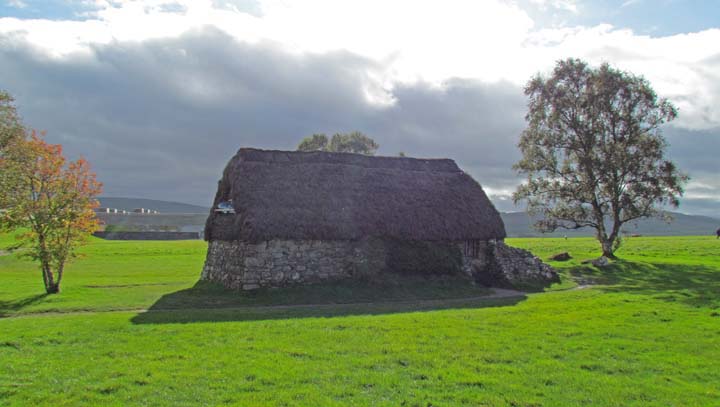
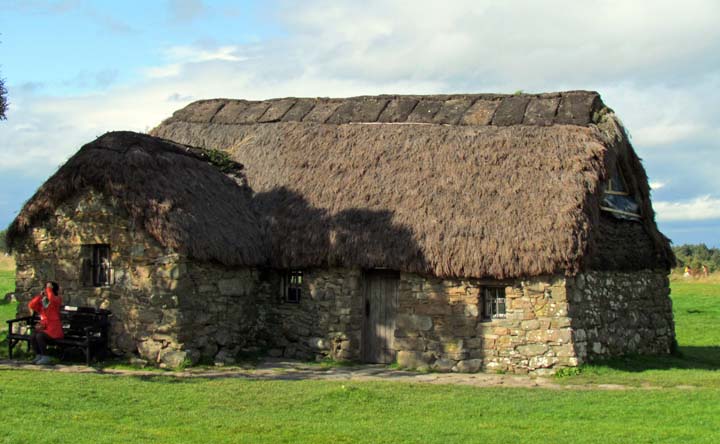
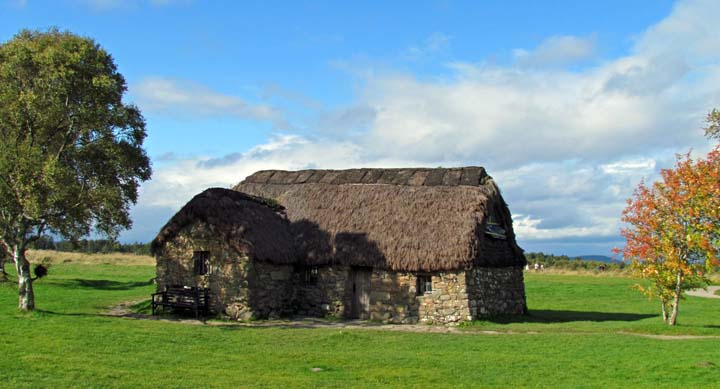
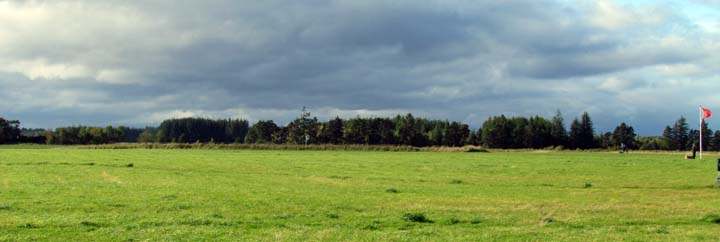

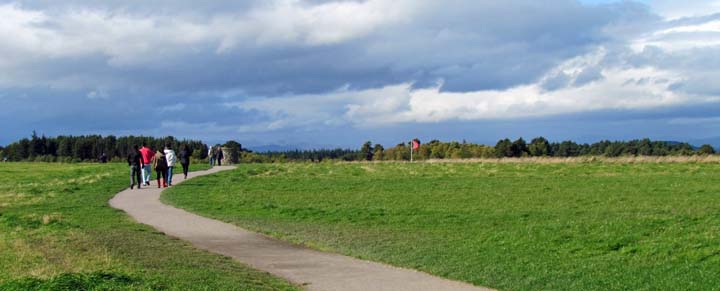

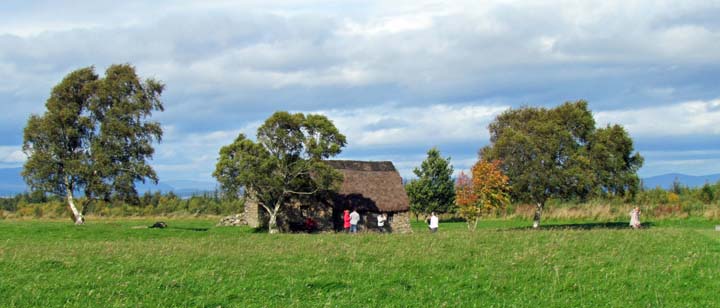
This wall on the battlefield side of the visitor's center has a block pulled out for each that died that day
The government on the left - the clans on the right
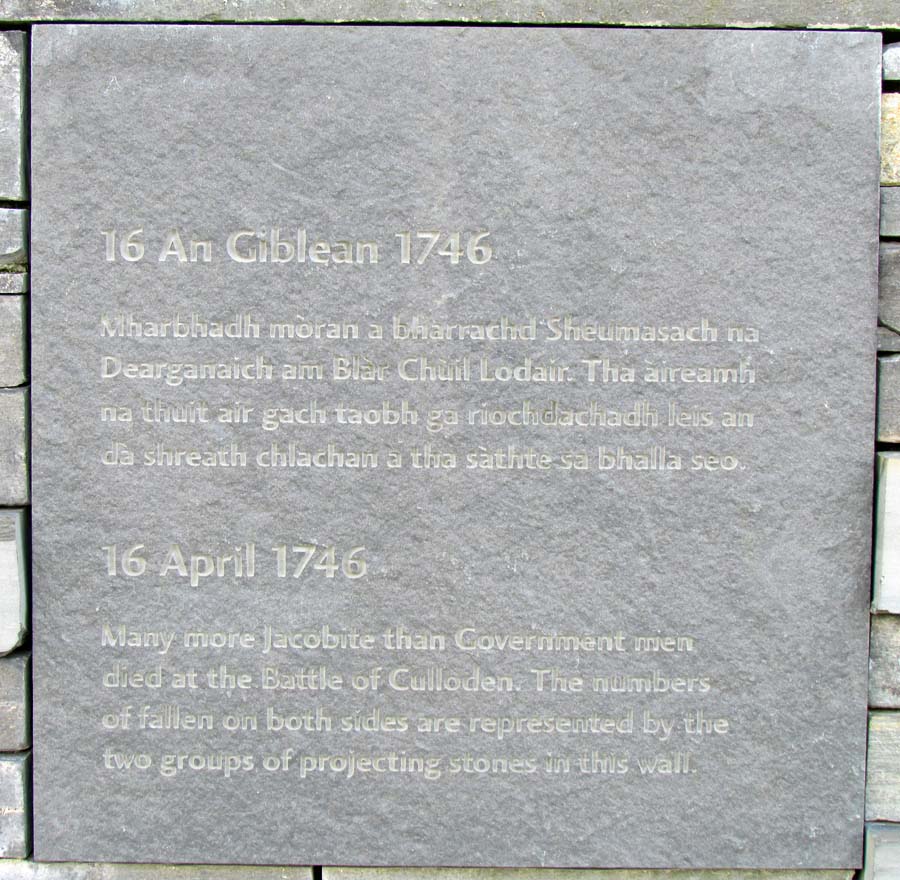
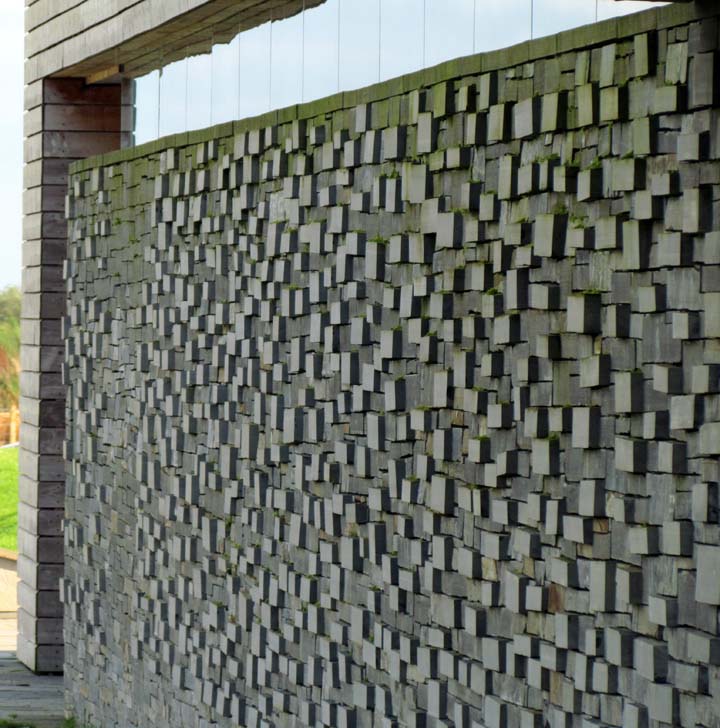

With a last look at the highland cows, we leave this sad, bloody place
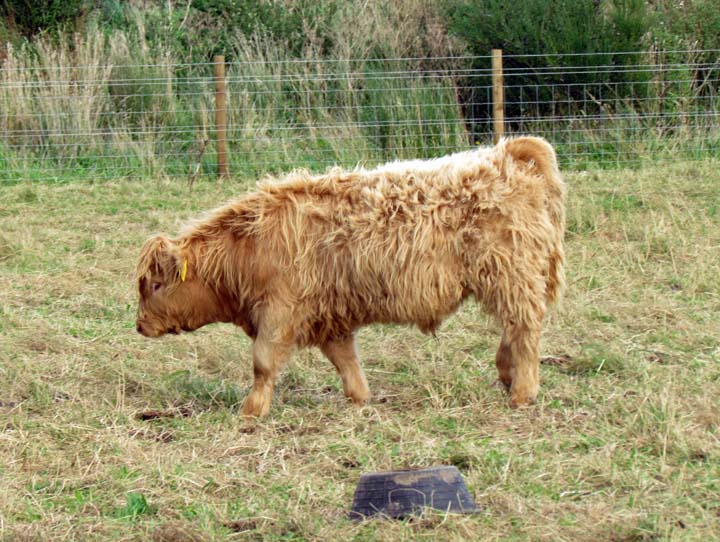
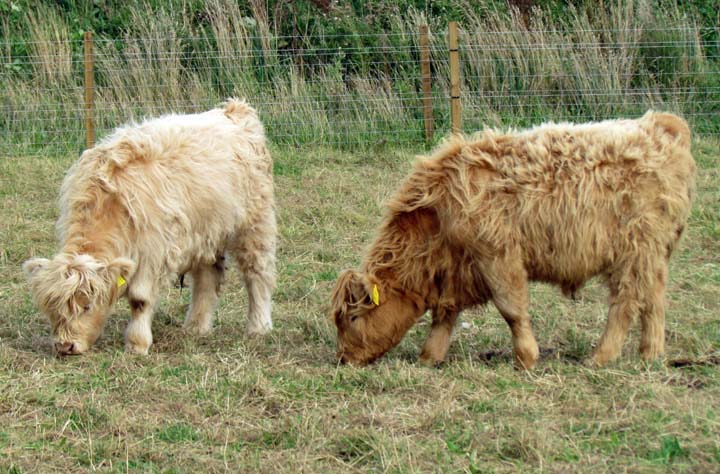
~ ~ ~ ~ ~ ~ ~ ~ ~ ~ ~ ~ ~ ~ ~ ~ ~ ~ ~ ~ ~ ~ ~ ~ ~ ~ ~ ~ ~